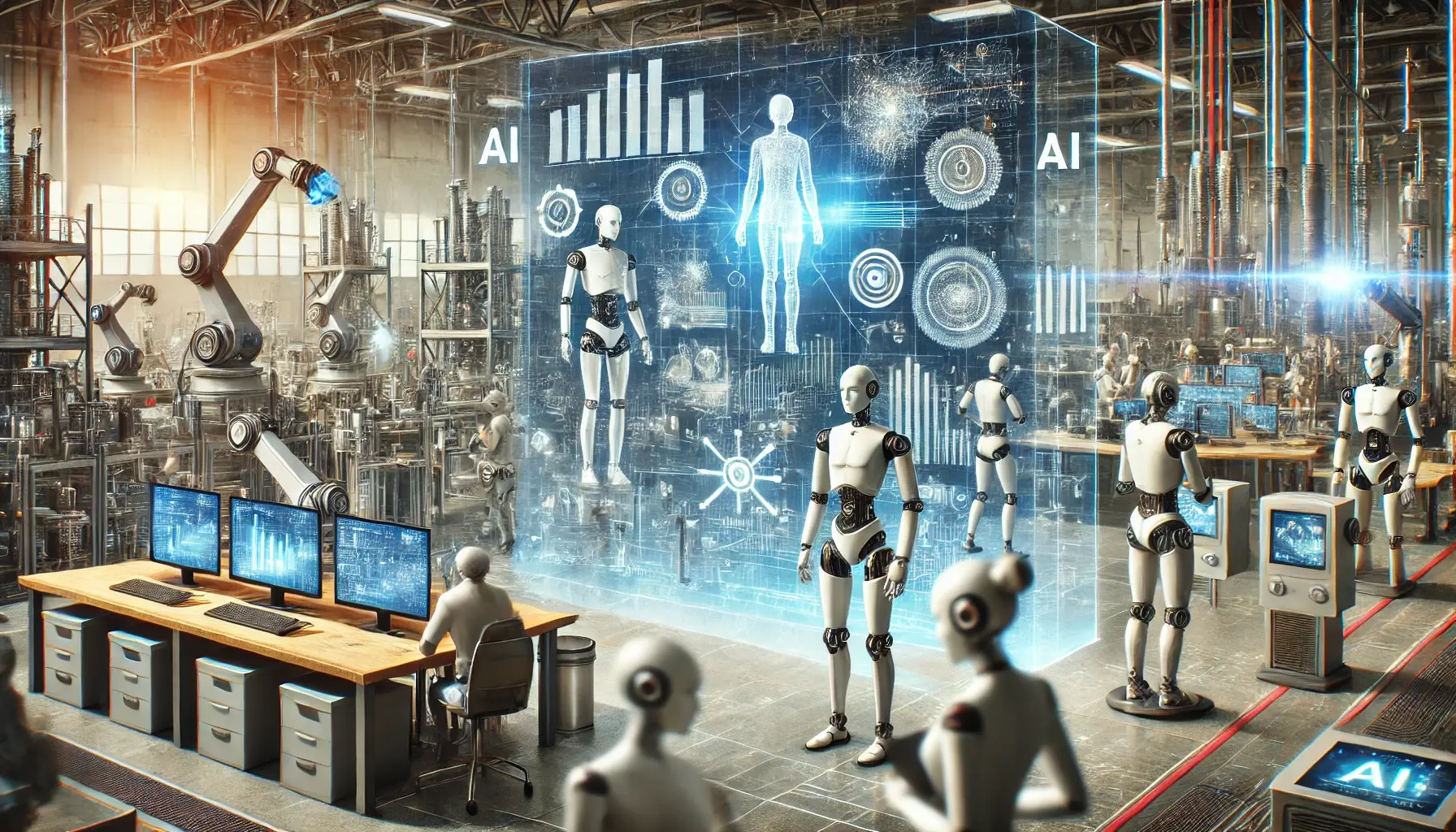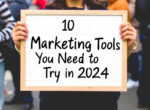![]()
As technology advances at breakneck speed, traditional industries face unprecedented challenges and transformations. This blog explores which sectors are most vulnerable and who will emerge victorious in this era of disruption.
The Rise and Fall of Iconic Companies: Lessons in Adaptability
We all remember Kodak, don’t we (of course if you from 90’s)?
In the late 1990s, Kodak was a giant in the photography world. By 1997, it had more than 160,000 employees and was responsible for about 85% of the world’s photography. But fast-forward a decade or so, and Kodak had filed for bankruptcy and was no longer the powerhouse it once was.
What went wrong?
The quality of Kodak’s products was not the problem – they still made top-tier film and cameras. The real problem was their failure to embrace and adjust to the digital age. Ironically, Kodak invented the first digital camera back in 1975. But instead of diving into this new trend, their leadership doubled down on their film business, making them lots of money at the time. Meanwhile, companies like Canon and Nikon fully embraced digital photography and started dominating the market.
According to The New York Times, Kodak’s reluctance to shift to digital photography eventually led to a 95% drop in its stock value by the time they filed for bankruptcy in 2012. Kodak’s missed opportunity to lead the digital revolution is a major lesson in the dangers of resisting change.
A similar story can be seen with Nokia:
Nokia once dominated the mobile phone market. During its peak, Nokia controlled over 40% of global mobile phone sales. They were the kings of mobile hardware.
But like Kodak, Nokia failed to pivot when the industry shifted towards smartphones. As companies like Apple and Samsung embraced the era of touchscreen phones and app ecosystems, Nokia was slow to adapt. Even though Nokia had a long history of innovation, by the time they started developing smartphones, it was too late.
Business Insider reports that Nokia’s share in the smartphone market plummeted from 50% in 2007 to just 3% by 2013 as Apple and Samsung took over.
Why Do These Giant Companies Fail?

The answer lies in one word: adaptability. Both Kodak and Nokia were victims of their own success. They failed not because their products were bad, but because they couldn’t change quickly enough in a fast-evolving tech world.
Forbes estimates that 88% of Fortune 500 companies that existed in the 1950s have vanished, often due to their inability to adapt to technological change.
-
Rapid Technological Evolution: In today’s world, technology changes exponentially. Just because a company is successful today doesn’t mean it will be tomorrow. If you can’t adjust, you’ll get left behind.
-
The Consequences of Complacency: When companies rely too heavily on what’s working now, they risk missing out on future opportunities. By the time Kodak and Nokia recognised their mistakes, their competitors had already taken over.
Disruption Is Everywhere: Lessons from Uber and Beyond

Think about the taxi industry – it’s a great example of how technology can completely transform a traditional business model.
Uber, which started out as just a ride-hailing app, completely changed how people get around. And here’s the crazy part – Uber doesn’t own a single car. They simply use technology like GPS and smartphones to connect riders and drivers. That’s it.
Today, Uber is in over 900 cities around the world (Statista backs that up).
So, what made Uber so successful?
It’s simple: convenience. They made it super easy for people to order rides, track where the driver is and enjoy dynamic pricing that changes with demand. Traditional taxi companies just couldn’t keep up with that kind of convenience.
And here’s where it gets even more interesting. Uber didn’t just disrupt taxis. They set an example for businesses across the board. Whether it’s healthcare or education, more industries are seeing this kind of tech-driven disruption. Uber showed everyone that with the right tech, you can completely transform the way things have always been done.
What industry will be next?
Automation and Artificial Intelligence: The New Workforce Revolution
If we take the adaptability lessons from Kodak, Nokia and Uber, we can see that the next frontier of transformation is already upon us:
- Automation and
- Artificial Intelligence (AI).
The above technologies are not just reshaping industries – they are becoming the new workforce, fundamentally changing how businesses operate and make decisions. While the shift can seem daunting, the potential benefits are staggering.
AI in the Legal Field: Completely Reshaping Legal Industry
Take IBM Watson as an example. Watson’s AI capabilities have already started revolutionising the legal industry. With the ability to sift through thousands of legal documents and precedents in a matter of seconds, Watson can provide legal advice more efficiently than many entry-level lawyers. According to a report from Deloitte, by 2025, it is estimated that 100,000 legal roles could be automated in the UK alone. This isn’t just about cutting costs; it’s about making legal services faster, more accessible, and more accurate.

AI in Healthcare: Things Got Better
Watson is also making waves in healthcare, particularly in diagnosing diseases. AI systems can now analyse millions of medical cases to provide highly accurate diagnoses. For example, AI is increasingly used to detect cancer at earlier stages, often with more precision than human doctors. A study from Stanford University found that AI models were able to diagnose skin cancer with 95% accuracy, compared to 86% for human dermatologists. This level of accuracy could potentially save millions of lives by catching diseases earlier and reducing human error in diagnostics.
If You Are A Business Owner, What Can You Do?
We’re living in a time when technology is more accessible than ever. This presents a huge opportunity for business owners of any size.
During the past industrial revolutions, we did not have access to exactly how new tech could help our business. The information was not available to you like it is today.
Artificial Intelligence (AI) and automation are no longer reserved for big companies. They are available to businesses of all sizes. We just need to be aware and be willing to explore. More importantly though, we need to take action.
Today, small business owners can leverage the power of technology to stay competitive, optimise their operations, and deliver better results with fewer resources.
Let’s explore how you can ride the wave of AI and technology to transform your business.
Huge Opportunity for Business Owners – Take Action!
AI is here and businesses are using AI in a big way. The great thing is that it’s not just available for tech giants but also for small and medium-sized businesses.
To be honest, I am writing this blog post by taking help from AI in a big way.
We must capitalise on this change now. You will be amazed how budget friendly AI is and what a huge impact it can have on your business operations, marketing and pretty much any aspect of your business.
With platforms like HubSpot, AI has become an affordable and scalable option for everyone.
Here’s why it’s different now:
-
Affordability: Many marketing and automation platforms like HubSpot have integrated AI into their products. So they are designed to be cost-effective for smaller businesses. You no longer need to spend a fortune to access these transformative tools.
-
Simplicity: Modern technology is intuitive and easy to implement. You don’t need to be a tech expert to optimise your business using AI-driven platforms.
-
Increased Efficiency: According to a McKinsey report, AI can reduce operational costs by 20-30%. The ability to automate tasks can save you time and resources. This will allow you to focus on scaling your business.
Key Areas Where You Can Optimise Your Business
There are some areas in which humans will always be required. But in some areas, AI can really help you save a lot.
1. Optimising Workforce Efficiency
It’s no secret that automation is transforming the job landscape. Many of the jobs we know today will not exist in the future. You must start now and leverage available technology. Start by just automate routine tasks and optimise operations – these are easy and low-hanging fruits.
For example, platforms like HubSpot combine sales, marketing, operations and customer service into one platform. You can reduce your operational costs by 20-30%.
I have been helping various business owners in different niches to improve their team’s efficiency by up to 100%. You can scale without hiring additional resources. You are literally leaving money on the table if you are not utilising these tools already.
Don’t Overlook the Importance of Customer Reviews
Customer reviews will always hold immense value. AI can’t replace humans in that aspect. We assign trust and emotion to real customer feedback.
You must focus on getting more reviews from your customers. Once you get the reviews regularly, make sure you are displaying them on social media, Google and your website.
If you’re not actively managing your online reputation, you are falling behind your competitors. I know so many business owners are paying additional attention to customer reviews because this is the number one reason for building trust and going higher on Google ranking (SEO).
2. Automated Review Requests
Integrate HubSpot with BirdEye. Then you will be able to send out review requests automatically when a customer completes a purchase or service.
This process will ensure that you never miss an opportunity to collect a review. It will also ensure that you don’t have to worry about managing this process on an ongoing basis. If you keep getting reviews and they are managed, it will help you increase your business’s credibility – there is NO doubt about it.
-
Benefit: If you collet at least 1 review per week, it will help you rank higher in search results. According to BrightLocal, 82% of consumers read online reviews before making a purchase.
-
Example: After closing a deal in HubSpot, BirdEye can automatically send a review request via email or SMS, asking for feedback on platforms like Google or Facebook.
3. Monitor and Respond to Reviews in One Place
With BirdEye, you can centralise all customer feedback. This means you can track and respond to reviews across multiple platforms, including Google, Facebook and all other main platforms.
-
Benefit: Managing reviews from one dashboard saves time and ensures you can respond to feedback promptly, whether positive or negative.
-
Example: Negative reviews can trigger a workflow in HubSpot, assigning a task to your customer service team to address the issue immediately. Positive reviews can automatically generate a thank-you email.
4. Improve Customer Satisfaction with NPS Integration
Use Net Promoter Score (NPS) surveys in HubSpot to gather valuable feedback, then integrate BirdEye to turn satisfied customers into advocates.
-
Benefit: Positive feedback can trigger requests for public reviews, while low NPS scores can lead to follow-up actions to improve customer satisfaction.
-
Example: A high NPS score automatically triggers BirdEye to send a review request to the customer, asking them to share their positive experience on Google or Facebook.
5. Use Reviews to Nurture Leads
Integrate BirdEye with HubSpot to use customer reviews as social proof in your marketing campaigns. When prospective customers see that others have had great experiences, they’re more likely to trust your business.
-
Benefit: Incorporating reviews into your marketing can increase conversion rates by up to 270%, according to Spiegel Research.
-
Example: HubSpot workflows can automatically include positive reviews from BirdEye in email newsletters or targeted marketing campaigns.
The Power of Data-Driven Decision Making
6. Enhanced Reporting
BirdEye’s review data can be integrated into HubSpot’s reporting tools, giving you a complete view of your business performance. Track customer sentiment, review scores, and overall business impact in one place.
-
Benefit: Data-driven insights help you understand what’s working and what needs improvement. McKinsey reports that companies leveraging AI for decision-making see a 5-6% increase in productivity.
-
Example: Set up a custom HubSpot dashboard to track monthly review scores, sentiment trends, and the impact of reviews on lead generation.
7. Target Customers Based on Review Sentiment
With BirdEye’s sentiment analysis, you can segment customers based on their review feedback and send personalised offers or follow-up communications.
-
Benefit: By sending targeted marketing to customers based on their review sentiment, you can boost customer retention and create loyalty programs that keep customers coming back.
-
Example: Customers who leave positive reviews can receive VIP offers, while those who leave negative feedback can receive targeted outreach from your customer support team.
Conclusion: Actions Business Owners Can Take Today!
-
Embrace Adaptability: Regularly assess industry trends and invest in ongoing training to keep your business agile and ready for change.
-
Leverage Software Solutions: Implement platforms like HubSpot to automate processes and integrate sales, marketing, and customer service into a single streamlined system.
-
Automate Where Possible: Use tools like BirdEye and HubSpot to automate tasks such as customer communication, review collection, and lead management.
-
Stay Ahead in Innovation: Explore and invest in emerging technologies like AI-driven solutions to remain competitive.
-
Focus on Customer Feedback: Actively encourage and track customer reviews using automated tools, and respond quickly to improve satisfaction and enhance your online reputation.






